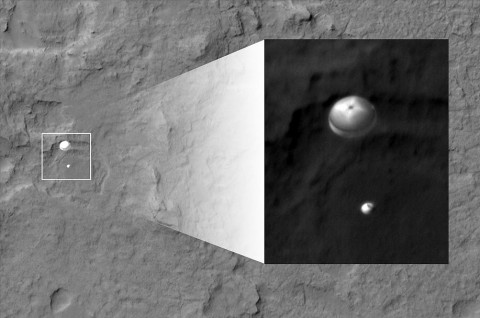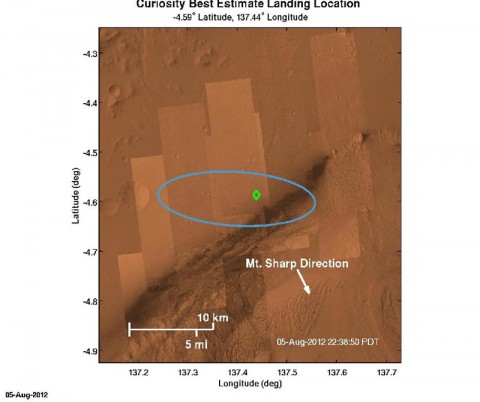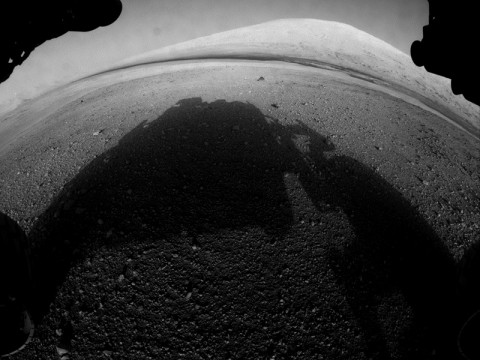Written by Dr. Tony Phillips
Science at NASA
 Washington, D.C. – An image from the High Resolution Imaging Science Experiment (HiRISE) camera aboard NASA’s Mars Reconnaissance orbiter captured the Curiosity rover still connected to its 51-foot-wide (almost 16 meter) parachute as it descended towards its landing site at Gale Crater.
Washington, D.C. – An image from the High Resolution Imaging Science Experiment (HiRISE) camera aboard NASA’s Mars Reconnaissance orbiter captured the Curiosity rover still connected to its 51-foot-wide (almost 16 meter) parachute as it descended towards its landing site at Gale Crater.
“If HiRISE took the image one second before or one second after, we probably would be looking at an empty Martian landscape,” said Sarah Milkovich, HiRISE investigation scientist at NASA’s Jet Propulsion Laboratory in Pasadena, CA. “When you consider that we have been working on this sequence since March and had to upload commands to the spacecraft about 72 hours prior to the image being taken, you begin to realize how challenging this picture was to obtain.”

“Guess you could consider us the closest thing to paparazzi on Mars,” said Milkovich. “We definitely caught NASA’s newest celebrity in the act.”
Curiosity, NASA’s latest contribution to the Martian landscape, landed at 10:32pm August 5th, PDT, (1:32 on August 6th, EDT) near the foot of a mountain three miles tall inside Gale Crater, 96 miles in diameter.

In other Curiosity news, one part of the rover team at the JPL continues to analyze the data from last night’s landing while another continues to prepare the one-ton mobile laboratory for its future explorations of Gale Crater. One key assignment given to Curiosity for its first full day on Mars is to raise its high-gain antenna. Using this antenna will increase the data rate at which the rover can communicate directly with Earth. The mission will use relays to orbiters as the primary method for sending data home, because that method is much more energy-efficient for the rover.



